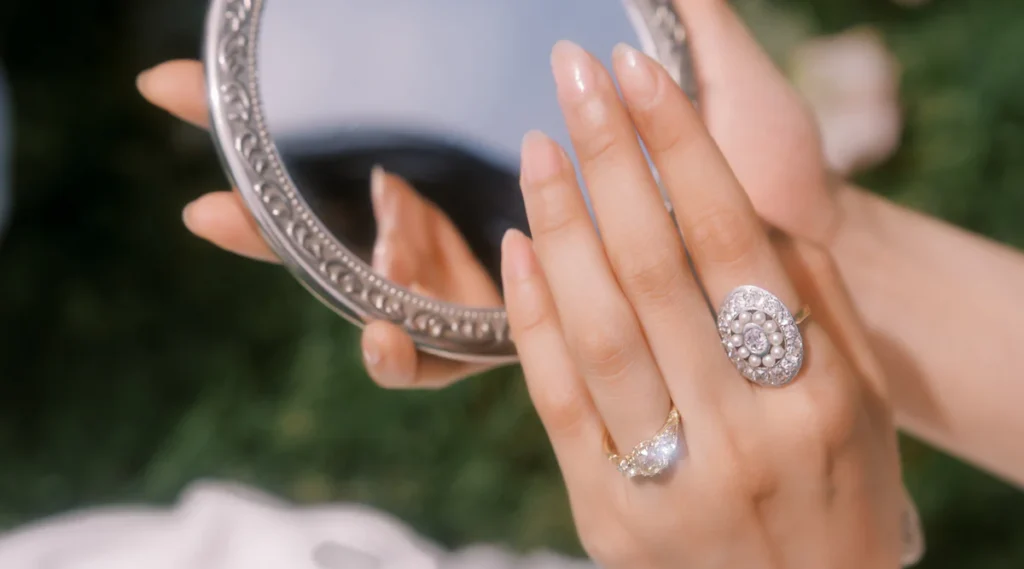Romantic Revival: British Engagement Rings of the Early 1800s

The early 1800s marked a significant shift in British culture, particularly in the realm of romantic relationships and the symbols that represented them. During this period, engagement rings UK began to evolve, reflecting not only personal sentiment but also the broader Romantic movement that emphasized emotion, nature, and individual expression. This era saw a revival of romantic ideals, influencing the designs and materials of engagement rings, and setting the stage for the elaborate jewelry styles that would characterize the Victorian era.
As the Regency period unfolded, the traditional engagement ring began to take on new meanings. Prior to this time, engagement rings were often simple bands or practical tokens of commitment. However, inspired by the influence of literature, art, and changing social norms, the early 1800s witnessed the introduction of more intricate designs. Jewelers began to incorporate colored gemstones, which allowed couples to express their unique sentiments and personal narratives through their choices.
Diamonds were still prized for their brilliance and strength, often symbolizing eternal love. However, the early 1800s saw a rise in the popularity of colored gemstones. Sapphires, emeralds, and rubies became favored choices, each imbued with its own meaning. Sapphires, known for their deep blue hues, represented loyalty and fidelity—qualities highly valued in romantic relationships. This symbolic connection made sapphires particularly appealing for engagement rings, reinforcing the notion of everlasting love.
Emeralds also gained prominence during this period. Their lush green color symbolized growth and renewal, resonating deeply with the Romantic ideals of the time. Couples sought emeralds not just for their beauty but for what they represented: a fresh start and the promise of a blossoming relationship. The trend toward incorporating meaningful gemstones allowed couples to select rings that told their own love stories, enhancing the emotional significance of their engagement.
Rubies, with their vibrant red tones, epitomized passion and desire, making them another popular choice among couples. The emotional weight of rubies added to the allure of engagement rings, making them a fitting symbol for romantic commitment. Jewelers often used these stones in elaborate settings, creating designs that highlighted their color and intensity, thereby captivating the hearts of those who wore them.
The craftsmanship of engagement rings during the early 1800s was nothing short of remarkable. Jewelers employed advanced techniques, such as intricate engraving and filigree work, resulting in pieces that were as much art as they were jewelry. This emphasis on artistry reflected the broader cultural appreciation for beauty and individual expression that defined the Romantic movement. Rings adorned with floral motifs and natural elements became increasingly popular, symbolizing the intertwining of love and nature.
Personalization also played a crucial role in the engagement rings of this era. Couples often chose to engrave initials, dates, or short messages on the inside of the band, transforming each ring into a unique symbol of their love. This practice imbued the rings with sentimental value, making them cherished heirlooms that could be passed down through generations. The ability to customize engagement rings allowed couples to express their individuality and connection, further enhancing the significance of these beautiful tokens.
The growing influence of literature and art also inspired the romantic revival in engagement rings. Works by poets and novelists emphasized themes of love, devotion, and nature, encouraging couples to seek rings that embodied these ideals. This cultural backdrop fostered a desire for engagement rings that were not only visually stunning but also rich in meaning, allowing couples to celebrate their love stories in a tangible form.
As the early 1800s progressed, the advancements of the Industrial Revolution began to reshape the landscape of jewelry production. While bespoke pieces remained a hallmark of the wealthy, technological innovations made it possible for skilled artisans to produce more intricate designs at lower costs. This democratization of jewelry meant that engagement rings could be enjoyed by a wider audience, allowing love and commitment to be celebrated across social classes.
In conclusion, the early 1800s were a transformative period for British engagement rings, marked by a romantic revival that emphasized personal expression and emotional significance. The introduction of colored gemstones, intricate designs, and personalized engravings allowed couples to create rings that truly reflected their love stories. Engagement rings UK from this era serve as timeless reminders of the enduring power of love and the artistry that can be found in the jewelry that symbolizes it. The legacy of these romantic traditions continues to inspire modern engagement ring designs, ensuring that the sentiments of love and commitment remain at the forefront of this cherished tradition.





